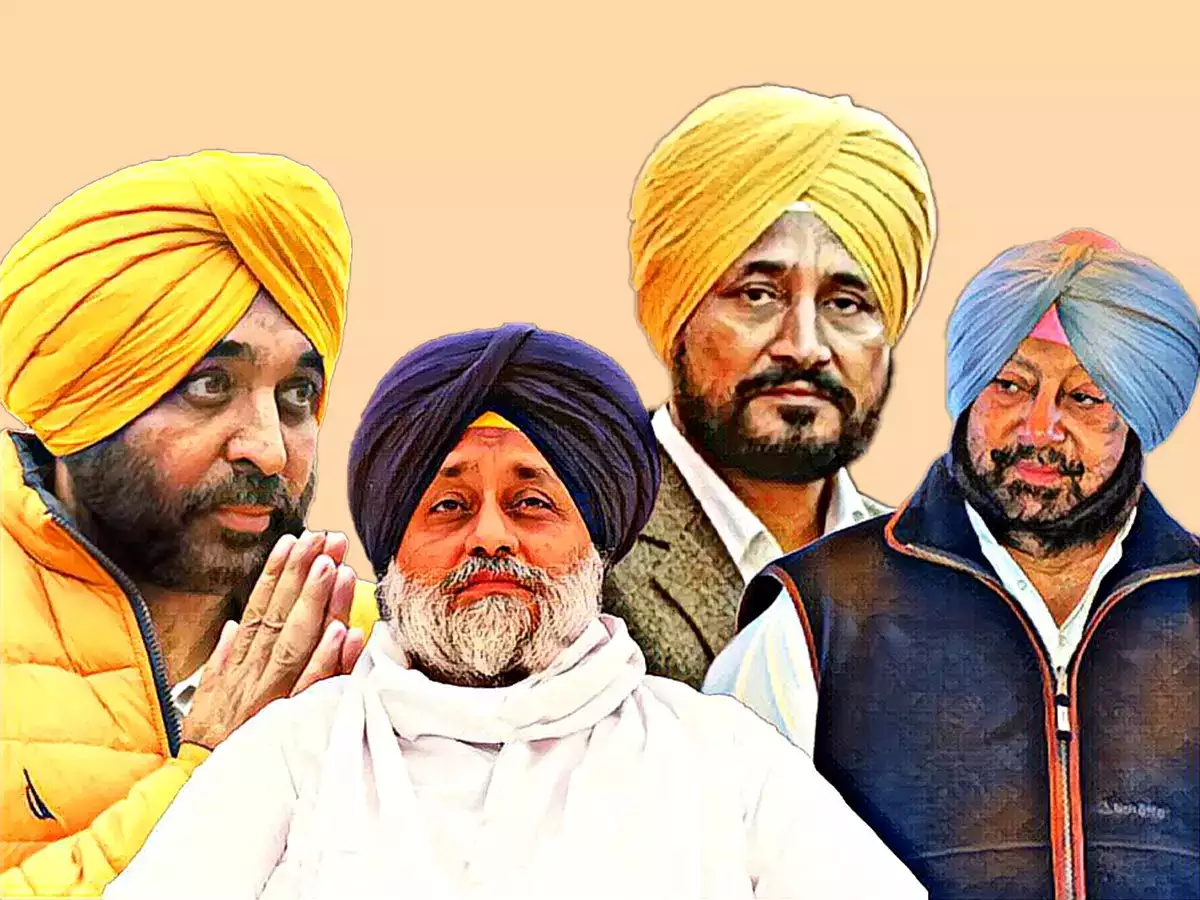History of Punjab Politics
The Punjab region was the site of one of the earliest cradles of civilizations, the Bronze Age Harappan civilization that flourished from about 3000 B.C. and declined rapidly 1,000 years later, following the Indo-Aryan migrations that overran the region in waves between 1500 and 500 B.C. The migrating Indo-Aryan tribes gave rise to the Iron Age Vedic civilization, which lasted till 500 BC. During this era, the Rigveda was composed in Punjab, laying the foundation of Hinduism. Succeeding period saw the rise of ancient kingdoms, followed by the Achaemenid invasion in the 6th century BC. Following Alexander the Great’s invasion and his conflicts with Porus and the Mallians of Multan, Chandragupta founded the Maurya Empire. After its decline the Yavanas, Sakas and Kushans successively established kingdoms in Punjab.
The Mughal Empire, established in 1526 AD, has left an immense cultural and architectural legacy in Punjab. The city of Lahore became one of the largest in the world under Mughals. In the 16th century, Sikhism was founded by Guru Nanak in central Punjab which attracted many followers. After a long period of anarchy due to the decline of Mughals in the 18th century, the Sikh Empire in 1799 unified most of the Punjab region. The region was conquered by the British EIC in 1849 after the Second Anglo-Sikh War and Punjab province was created in 1857. In 1947, Punjab was partitioned amidst wide-scale violence. Today most of Punjab including Lahore is part of Pakistan, with a smaller portion in India.
Pre Independence Politics:
From 1919-23 Punjab politics was chaotic and political affiliation was not clearly demarcated. Population in general had anti- british stance and took active part in movements like Khilafat, Non cooperation and Gurdwara reform movement.
1920- Akali party was established, for the interest of the sikh community.
1923- Union party was raised on agricultural ideology, created by the Punjab government.
The Unionist Party was established by the landholders, they were pro british and anti congress.
The prominent 1937 elections resulted in the majority of Unionist Party, Muslim league was able to secure only 2 seats, which later led to Jinnah-Sikander pact for converting Muslim members of Unionist Party being converted into members of Muslim League.
In March, 1946, Prime Minister Attlee announced Britain’s decision to leave India. Subsequently, three British ministers arrived in Pakistan for negotiations. Witnessing the situation, the Sikhs reluctantly accepted the partition of Punjab. Jinnah offered autonomy to Sikhs in Pakistan, but due to mutual distrust, the talks yielded no results. The Sikh leadership stood with Congress and India against the creation of Pakistan.
The Sikhs played a significant role in integrating East Punjab into India during independence. They bore heavy losses of life and property during the partition, with 179 renowned historical Gurdwaras remaining in Pakistan. These events have profoundly influenced post-independence Punjab and Sikh politics, which will be further explored in subsequent discussions.
Post Independence Politics:
Politics in post-Independence India and partitioned Punjab was shaped by issues related to identity politics and access to political power. The question of separate religious identity, communal and sectarian mobilization, secular, linguistic and strata based grouping remained dominant in the political discourse. The dynamic interaction of the state with the path of development in the background of co-existence of competing identities produced diverse political formations ranging from merger of political parties to post-election coalitions to pre-election alliances.
After independence Gopi Chnd Bhargava became first CM of Punjab, soon he was removed from office as a vote of no confidence was passed against him. Thereafter Bhim Sen Sachar became new minister, he also resigned after 7 months due to differences with Sradar Patel. Punjab later stayed under president’s rule till the first general elections of 1952. In 1952 elections congress secured a clear majority. Bheimsen Sachar again became CM of the state, who also later resigned after 4 years, in 1956 Pratap Singh became new CM.
During the 1980s the legislative Assembly of the state of Punjab was dissolved and the state of Punjab was placed under presidential rule by the Indian government on February 17, 1980. Elections were held in the state of Punjab on May 30, 1980, and the Indian National Congress (INC) won 63 out of 117 seats in the Legislative Assembly. The Shiromani Akali Dal (Supreme Akali Party) won 37 seats in the Legislative Assembly.
Darbara Singh of the INC formed a government as Chief Minister on June 6, 1980. Lala Jagat Narrain, a Hindu journalist and publisher, was assassinated in the city of Ludhiana in the state of Punjab in 1981. Sant Jarnail Singh Bhindranwale, a Sikh leader, surrendered to government police on September 20, 1981. Following more than three weeks of riots, Sant Jarnail Singh Bhindranwale was released from detention in October, 1981. Hindus and Sikhs clashed in the city of Amritsar in 1982. On May 1, 1982, the Indian government broke off negotiations with Akali Dal, a Sikh youth group, and banned Dal Khalsa, National Council of Khalistan (NCK), and several other Sikh organizations. Giani Zail Singh, former Chief Minister of the state of Punjab, was elected president of India by the parliament in July 1982. On August 4, 1982, Akali Dal launched a civil disobedience campaign, resulting in the arrests of some 36,000 individuals in the following two months. Sikh militants led by Sant Jarnail Singh Bhindranwale launched an insurgency in the state of Punjab beginning in September 1982. Sikhs militants attacked the Indian parliament in October, 1982, resulting in the deaths of four individuals. Balbir Singh Sandu, leader of the NCK, announced the beginning of the Sikh rebellion against the government in April, 1983. Some 219 individuals were killed in a Sikh terrorist incident in Dilwan in October, 1983. The Indian government declared a state-of-emergency and presidential rule in the state of Punjab in October, 1983. The government banned the militant Sikh youth group (Akali Dal) in March, 1984. Sikh militants killed Ramesh Chandler, a Hindu newspaper editor, on May 12, 1984. Eleven Sikhs were killed by government troops in the Golden Temple in Amritsar in the state of Punjab in June, 1984, and government troops were deployed in Amritsar in June, 1984. Government troops attacked and overran the Golden Temple on June 3-10, 1984. Some 433 Sikh militants, including Sant Jarnail Singh Bhindranwale, and 83 government troops were killed in Operation Bluestar. Some 492 civilians were also killed in Operation Bluestar. On June 13, 1984, the government accused Pakistan of training Sikh extremists in the state of Punjab.
Eight bus passengers were killed by Sikh militants in Batala in September, 1984. Government troops completed their withdrawal from the Golden Temple in September, 1984. Prime Minister Indira Gandhi ordered the closure of the border between the state of Punjab and Pakistan in October, 1984. Prime Minister Indira Gandhi was assassinated by two Sikh security observers in New Delhi on October 31, 1984, and some 3,000 Sikhs were killed in violence in Delhi and other cities following the assassination. Some 100,000 Sikhs fled as refugees from Delhi to the state of Punjab.
The Indian government and moderate Sikhs led by Sant Harchand Singh Longowal signed an 11-point peace agreement on July 24, 1985, but Sant Harchand Singh Longowal was assassinated by Sikh extremists on August 20, 1985. Elections were held in the state of Punjab on September 25, 1985, and the Shiromani Akali Dal (Supreme Akali Party) won 73 out of 117 seats in the Legislative Assembly. The Indian National Congress (INC) won 32 seats in the Legislative Assembly. Surjit Singh Barnala of the Shiromani Akali Dal (Supreme Akali Party) formed a government as Chief Minister on September 29, 1985. The Indian government lifted the state-of-emergency and presidential rule in the state of Punjab on September 29, 1985. On January 22, 1986, three Sikhs were sentenced to death for their involvement in the assassination of Prime Minister Indira Gandhi. Sikh militants killed 20 laborers in Mallian in Jalandhar District on March 29, 1986. Sikh militants killed six government policemen on April 6, 1986.
Khalistan Liberation Force (KLF) militants killed 22 bus passengers in Khudda on November 30, 1986. Chief Minister Surjit Singh Barnala of the state of Punjab was removed from office by the Indian government on May 11, 1987, and the state of Punjab was placed under presidential rule by the Indian government on June 11, 1987. Members of the Khalistan Commando Force (KCF) killed 34 Hindus in northeast Punjab state on March 3, 1988, and KCF rebels killed another 17 individuals in the state of Punjab on March 29, 1988. Government troops launched a military offensive (Operation Black Thunder) against KCF rebels in Amritsar in May 1988, resulting in the deaths of some 40 rebels. Sikh militants killed some 80 individuals, mostly Hindus, in Ludhiana District in the state of Punjab on June 15, 1991. The Indian government deployed 120,000 government troops in the state of Punjab in November 1991. Sikh militants killed 49 individuals, mostly Hindus, on a passenger train in the village of Sohian in the state of Punjab on December 27, 1991. Some 5,000 individuals, including 3,300 civilians, were killed in violence in the state of Punjab in 1991. Elections were held in the state of Punjab on February 19, 1992, and the Indian National Congress (INC) won 87 out of 117 seats in the Legislative Assembly. The Bahujan Samaj Party (BSP) won nine seats in the Legislative Assembly. The Shiromani Akali Dal (Supreme Akali Party) boycotted the elections. Presidential rule ended in the state of Punjab, and Beant Singh of the Indian National Congress (INC) formed a government as Chief Minister on February 25, 1992. Gurbachan Singh Manochahal, the leader of the Bhindranwale Tiger Force for Khalistan, was killed by government police in the village of Rattaul on February 28, 1993. Some 25,000 individuals were killed, and some 100,000 individuals were displaced during the crisis.
Click Here To Download The Paper


📌Analysis of Bills and Acts
📌 Summary of Reports from Government Agencies
📌 Analysis of Election Manifestos

